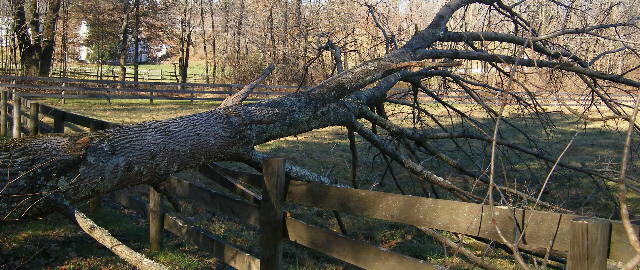Discussing insurance fraud detection training 🕵️♂️

🔑 Key Takeaways
- 💡 Fraudulent claims are often easy to detect due to unnatural patterns and obvious signs, such as damage positioned in easily accessible areas or repetitive impact points.
- 🔍 Independent adjusters (IAs) are trained to spot these patterns and are knowledgeable about fraud detection techniques, unlike those attempting fraud who typically lack this specialized training.
- 📖 It’s important to understand the motivation behind fraudulent claims. Often the individuals committing fraud are under financial pressure, looking to benefit from insurance payouts.
- 💬 Adjusters should communicate their role clearly to homeowners. Many people believe adjusters are primarily focused on denying claims, whereas their actual goal is to ensure homeowners receive the compensation they are legitimately owed.]
- 🛡️ For new independent adjusters, understanding insurance coverages such as Errors and Omissions (E&O) and general liability is crucial. These insurances protect adjusters from claims of negligence or accidental damages during inspections.
📝 Summary
Insurance adjusting involves not only assessing the validity and extent of a claim but also identifying and managing fraudulent activities. The ability to recognize fraudulent claims is a key skill for adjusters, as these often present with telltale signs and patterns that deviate from genuine damage. For instance, damages located in easily accessible areas of a roof or show distinctly repetitive impact patterns are common indicators of fabricated claims. Such fraudulent attempts are typically straightforward to identify, especially for adjusters equipped with the proper training and experience.
Independent adjusters, or IAs, play a crucial role in this process. They receive specialized training on fraud detection, which is something that those attempting fraud lack. This training often includes understanding human behaviors linked to deception and financial pressures that might drive someone to commit fraud. For instance, a person struggling with significant financial obligations might see insurance fraud as a quick solution to their problems, not foreseeing the simple detection methods adjusters apply.
There is also a significant public misconception about the role of adjusters. Often, homeowners perceive adjusters as individuals who are there solely to deny claims and minimize payouts. In reality, adjusters aim to ensure that claims are legitimate and that homeowners receive the fair compensation owed for their losses, without unjust enrichment. Particularly, IAs are tasked with evaluating claims impartial pooly, using their training to distinguish between legitimate claims and fraudulent ones, all while maximizing rightful payments to policyholders.
Furthermore, understanding and effectively utilizing insurance coverages such as Errors and Omissions (E&O) and general liability is foundational for new adjusters. E&O insurance protects adjusters from claims of professional mistakes or negligence, while general liability insurance covers damages or injuries caused during field inspections. Typically newer adjusters may already be under a blanket coverage through their adjusting firm but, with more experience and a higher volume of claims handled, adjusting these coverages to better suit their specific needs might be beneficial. For instance, a seasoned adjuster working independently might find it advantageous to have personalized coverage that could potentially be more cost-effective and extensive than the standard policies offered through an adjusting firm.
Adjusters should also be aware of specialized insurance coverages available, such as those for drone usage or cyber liabilities, which can be pivotal depending on the nature and scope of their work. Continuing education and staying informed about different insurance options is crucial for adjusters to effectively manage risks associated with their profession.
🚀 Action Items
- Educate Yourself: As an adjuster or aspiring adjuster, prioritize continuous education on fraud detection techniques and industry developments. Understanding the nuances of detecting falsified claims can significantly enhance your efficiency and accuracy in the field.
- Clarify Your Role: Always ensure homeowners understand your role in the claims process. Communicate that your primary goal is to provide fair compensation for genuine claims, not to unduly deny benefits. This can help build trust and facilitate smoother interactions with claimants.
- Review Your Insurance Requirements: Evaluate your current E&O and general liability coverage. If you’ve gained considerable experience and handle a significant volume of claims, consider customizing your insurance coverages to better suit your professional needs and possibly reduce costs.
You can watch the full YouTube video here: http://availability.guru/g7j6xp






Responses